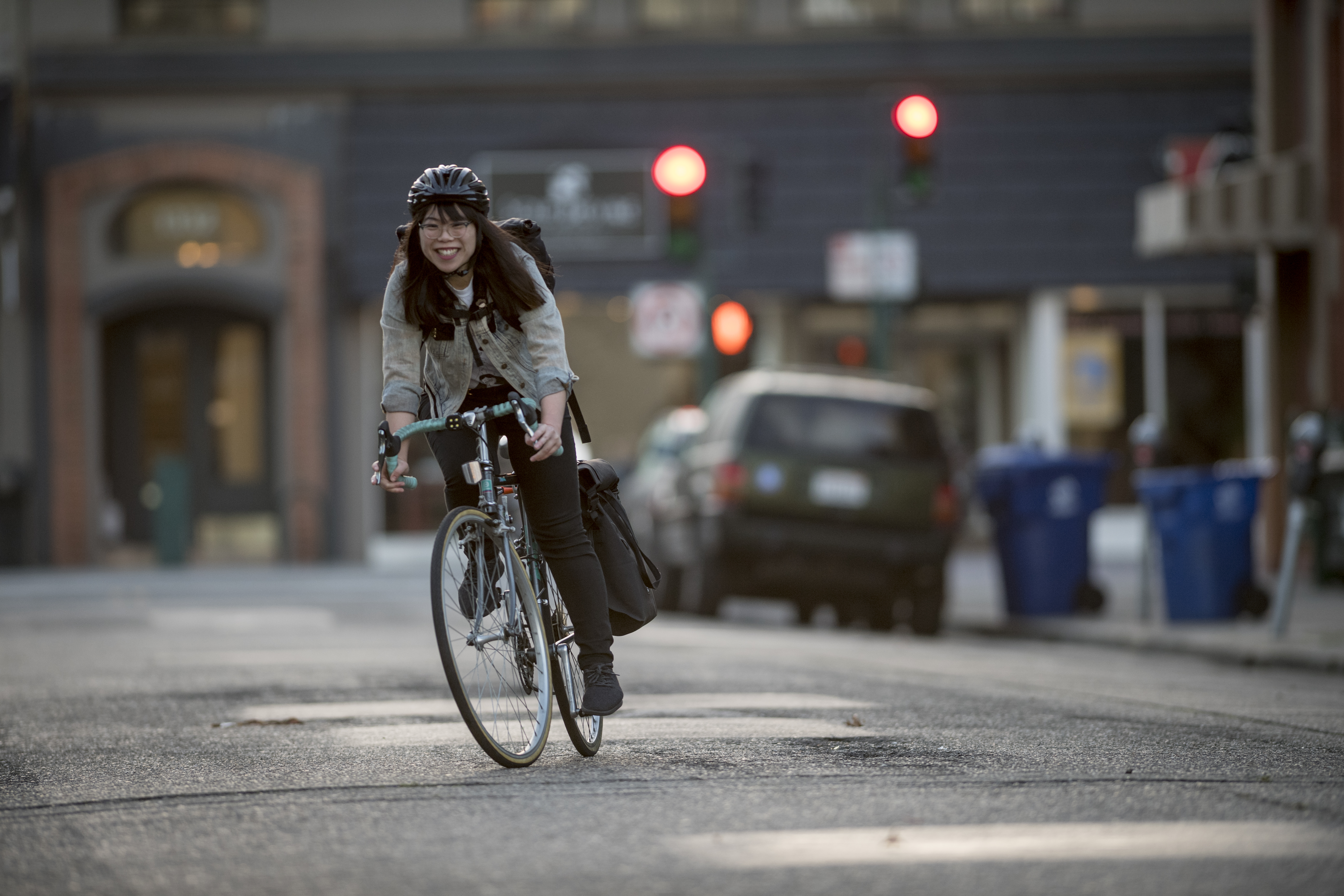The Alameda County Transportation Commission has historically invested in many different types of transportation networks. The Countywide Bikeways Network creates a new vision for a cohesive, consistent, and connected network of high-quality bicycle facilities throughout Alameda County.
It builds off priorities already identified in the agency’s past planning, including the Countywide Transportation Plan and the Countywide Active Transportation Plan found below to form a cohesive network of safe and comfortable bike routes of countywide importance. The Countywide Bikeways Network Summary Report describes the development process and background. Links to key implementation resources, including the network map, approved by the Commission on May 25, 2022 and the All Ages and Abilities Policy and Design Expectations are located below:
- Countywide Bikeways Network Map
The Alameda County Transportation Commission has historically invested in many different types of transportation networks including: freight rail, transit, freeway and highway networks. In May, 2022 the Commission adopted the 400-mile Countywide Bikeways Network. The network creates a new vision for a cohesive, consistent, and connected network of high-quality bicycle facilities throughout Alameda County.
- All Ages and Abilities Policy
The Alameda CTC All Ages and Abilities Policy, approved December 2022, sets the highest expectation for safety and comfort on the Countywide Bikeways Network to ensure people of all ages and physical abilities are safe and feel safe walking, biking, rolling, and riding transit. The policy also encourages a planning framework that prioritizes transit throughout the network and acknowledges the complicated nature of corridor planning and multimodal tradeoffs. It also conforms to the Metropolitan Transportation Commission’s policy requiring projects on the regional Active Transportation Network (of which the Countywide Bikeways Network is a subset) applying for regional discretionary transportation funding or support to incorporate design principles based on the National Association of City Transportation Officials (NACTO) Contextual Guidance for Selecting All Ages and Abilities Bikeways. The All Ages and Abilities Policy does not apply to projects funded or submitted for funding prior to the approval of the policy by the Commission in December 2022.
- Design Guide
To achieve a truly safe and comfortable network, Alameda CTC has further articulated Countywide Bikeways Design Expectations, that identify more specific design principles and parameters meant to advance high-quality bikeways. To help jurisdictions meet the Design Expectations, Alameda CTC maintains an online design resource with strategies pulled from design best practices and guidance.
- Bikeways Academy
As part of the implementation of the Countywide Bikeways network, Alameda CTC is conducting a series of technical trainings and information exchanges for local jurisdiction and agency staff. This Bikeways Academy has included a leadership-level workshop, technical sessions on Design Fundamentals and Phased Implementation, and white papers on Phasing and Implementation Strategies. All session materials and white papers are on the Bikeways Academy website.
PLAN STRUCTURE
The plan is divided into five parts, including a two-part appendices, all of which can be accessed below:2012 Bicycle and Pedestrian Plans
The Countywide Bicycle and Pedestrian Plans were adopted in October 2012 by the Alameda CTC Commission. The plans and plan maps can be viewed here: Vision System Maps only: North | Central | South | East Vision Network Maps only: North | Central | South | East2001 and 2006 Bicycle and Pedestrian Plans
- Metropolitan Transportation Commission Complete Streets Program
- Metropolitan Transportation Commission Complete Streets Policy (Adopted March 2022)
- Metropolitan Transportation Commission Complete Streets Checklist
- Regional Active Transportation Plan
- Regional Active Transportation Network
- Complete Streets Webinar Series
Alameda CTC, along with several regional agencies and educational institutions, has been collecting data in some form on the number of bicyclists and pedestrians throughout the county since 2002. Alameda CTC now collects manual count data at 150 locations across Alameda County. These locations are counted biennially between September and October using the National Bicycle and Pedestrian Documentation Project methodology.
The goals of the Alameda CTC Countywide Bicycle and Pedestrian Count Program are to track trends in levels of bicycling and walking for all purposes, to gain insights into variations in levels of biking and walking over time and in different areas of the county, and to help quantify the demand for biking and walking to make the case for investment in bicycle/pedestrian projects and programs.

- 2022 Manual Count Summary Data
- 2020 Manual Count Summary Data
- 2018 Manual Count Summary Data
- Map of Manual Count Locations: North | Central | South | East
- 2002-2012 Manual Count Report
- 2002-2011 Manual Count Report
- 2002-2010 Manual Count Report
- 2022 Raw Data
- 2020 Raw Data
- 2018 Raw Data
- 2017 Raw Data
- 2016 Raw Data
- 2014 Raw Data
- 2013 Raw Data
- 2012 Raw Data
- 2011 Raw Data
- 2010 Raw Data








